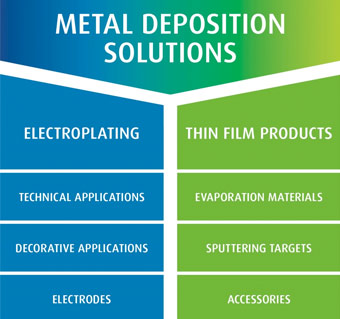
More info
tags: Cheap Palladium Plating – Companies Cheap Palladium Plating – High Power Connector Plating – Longevity High Current Plugs – Overview Cheap Palladium Plating –
Would you like more info about information ruthenium plating then take a look at https://mds.umicore.com/en/ | Information Ruthenium Plating
Heading 3: Improved Electrical Conductivity
Another significant benefit of ruthenium plating is its high electrical conductivity. It exhibits lower resistivity than most common metals used in electroplating, allowing for better performance and efficiency. This makes it a preferred choice for electronic devices, where high conductivity is crucial.
Heading 3: Lower Plating Thickness Requirement
Ruthenium plating also offers an advantage in terms of plating thickness. Unlike other metals, ruthenium can provide the same level of protection with a thinner layer, reducing the amount of material used in the process. This can result in cost savings and reduce the environmental impact of electroplating processes.
Heading 2: Applications of Ruthenium Plating
Ruthenium plating has versatile applications across various industries, including:
Electronics: Ruthenium plating is commonly used in electronic devices, such as smartphones, laptops, and wearables. Its high electrical conductivity and corrosion resistance make it ideal for circuit boards and other electronic components.
Automotive: The automotive industry utilizes ruthenium plating for its corrosion resistance and aesthetic appeal. It is often used to coat parts, such as grilles, trims, and wheels, to protect them from wear and tear.
Medical: Due to its biocompatibility and corrosion resistance, ruthenium plating finds applications in medical devices and implants. It is also commonly used in dental equipment and implants.
Aerospace: The aerospace industry benefits from ruthenium plating for its high-temperature stability and resistance to corrosion. It is commonly used in aircraft parts, such as turbine blades and engine components.
Heading 1: Conclusion
In conclusion, ruthenium plating offers several advantages in terms of sustainability, corrosion resistance, electrical conductivity, and cost-effectiveness, making it a valuable option for electroplating processes. With its versatile applications across various industries, it is becoming an increasingly popular choice for improving the surface properties of materials. As the demand for sustainable solutions continues to rise, ruthenium plating is expected to play a significant role in the future of electroplating.
Title: Understanding the Benefits of Ruthenium Plating in Electroplating Processes
Introduction:
Electroplating is a widely used process in various industries, such as automotive, electronics, and medical, to enhance the surface properties of a material. Typically, electroplating involves coating a conductive substrate with a thin layer of metal to provide protection, improve conductivity, or enhance the aesthetic appearance. Among the commonly used metals for electroplating, palladium has been a popular choice for its excellent properties. However, recent advancements in materials science have sparked interest in using ruthenium as a sustainable substitute for palladium plating. In this article, we will explore the benefits of ruthenium plating in electroplating processes and why it is gaining popularity in the industry.
Heading 1: What is Ruthenium Plating?
Ruthenium plating is the process of depositing a thin layer of ruthenium metal onto a conductive substrate through electroplating. Ruthenium is a rare, silvery-white transition metal that is part of the platinum group. It has excellent corrosion resistance, high melting point, and good ductility, making it suitable for various electroplating applications.
Heading 2: Advantages of Ruthenium Plating
Ruthenium plating offers several advantages over other metals used in electroplating processes, and here are some of them:
Heading 3: Sustainable Alternative to Palladium
Palladium is a scarce and expensive metal, which has raised concerns about its long-term sustainability in the electroplating industry. On the other hand, ruthenium is abundant in nature and has a lower market value, making it a more sustainable alternative to palladium plating. Not only does this help reduce costs, but it also ensures a stable supply of the metal for future use.
Heading 3: Enhanced Corrosion Resistance
One of the primary reasons for using electroplating is to enhance the corrosion resistance of a material. Ruthenium has excellent corrosion resistance, making it an ideal choice for plating applications in harsh environments. It has proven to be more resistant to corrosion than other metals, such as gold and palladium, making it a valuable option for protecting critical components.
Information ruthenium plating
!–StopPubText–>.
